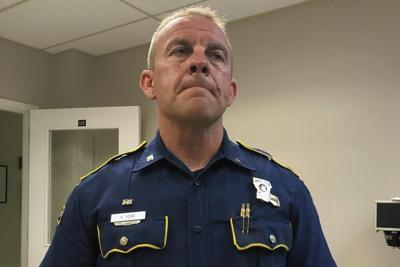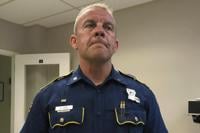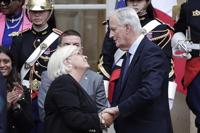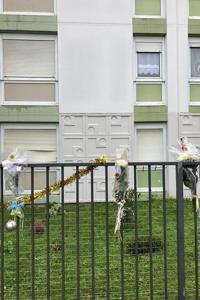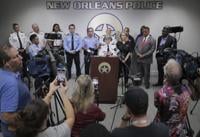FARMERVILLE, La. (AP) — A judge delivered a victory Monday to the state prosecution of white Louisiana lawmen in the deadly 2019 arrest of Ronald Greene, allowing the most serious charge of negligent homicide to go forward against a trooper captured on body-camera video dragging the Black motorist by his ankle shackles and forcing him to lie facedown in the dirt.
The case had been steeped in uncertainty in recent months after the judge dismissed obstruction charges against two other troopers, leaving three officers still facing charges.
“My heart is lifted by this," said Greene's mother, Mona Hardin. "We shouldn’t have waited four plus years, but we’re still moving forward.”
Master Trooper Kory York had sought dismissal of the negligent homicide and malfeasance charges against him after prosecutors acknowledged an extraordinary oversight in which they improperly allowed a use-of-force expert to review statements York made during an internal affairs inquiry. Such compelled interviews may be used to discipline officers administratively but are specifically shielded from use in criminal cases.
But Judge Thomas Rogers ruled Monday that the prosecutors' blunder did not taint York's indictment, and that the use-of-force expert, Seth Stoughton, had drawn his conclusions not from the protected interview but the graphic body-camera footage of Greene's deadly arrest on a rural roadside outside Monroe.
Stoughton concluded that the troopers used “egregiously disproportionate” force in detaining Greene.
“We don’t need to hear no more — just show the video,” prominent civil rights attorney Ben Crump told reporters outside the Union Parish Courthouse this summer. “The killing of Ronald Greene is just as tragic as the killing of George Floyd, of Ahmaud Arbery, of Tyre Nichols. It is as tragic of a killing by police on a citizen as I have witnessed on video.”
State police initially blamed Greene’s May 10, 2019, death on a car crash at the end a high-speed chase. After officials refused for more than two years to release the body-camera video, the the footage showing white troopers converging on Greene before he could get out of his car as he wailed: “I’m your brother! I’m scared!”
As Greene moaned and writhed in the dirt, York ordered the heavyset man to “shut up” and “lay on your f------ belly like I told you to!”
One trooper can be seen striking Greene in the head and later boasting, “I beat the ever-living f--- out of him.” That trooper, , was widely considered the most culpable of the half-dozen officers involved, but he died in a high-speed, single-vehicle crash in 2020, hours after he was informed he would be fired for his role in Greene’s arrest.
York’s defense attorney, J. Michael Small, was expected to appeal the ruling. “With all due respect," he said, "I strongly disagree with the court's decision.”
The stakes could not have been higher for District Attorney John Belton and , who have faced mounting criticism over their handling of the case. Had Rogers dismissed the charges of negligent homicide and malfeasance in office against York, prosecutors would have been unable to seek a new indictment under Louisiana’s statute of limitations.
The ruling comes amid new calls for the U.S. Justice Department to bring its own indictment against the troopers. Federal prosecutors have been weighing civil rights charges for years amid a grand jury investigation that examined whether Louisiana State Police brass obstructed justice by dragging their feet and protecting the troopers involved in Greene's arrest.
In a previous ruling, the judge let stand an obstruction of justice charge against Lt. John Clary, the ranking officer during Greene’s arrest who is accused of withholding his body camera footage from investigators. Clary’s is the only clip showing the moment a handcuffed, bloody Greene moans under the weight of two troopers, twitches and then goes still.
The only other remaining charges are two counts of malfeasance against Chris Harpin, a former Union Parish deputy sheriff who taunted Greene before he stopped breathing: “Yeah, yeah, that s—- hurts, doesn’t it?”

